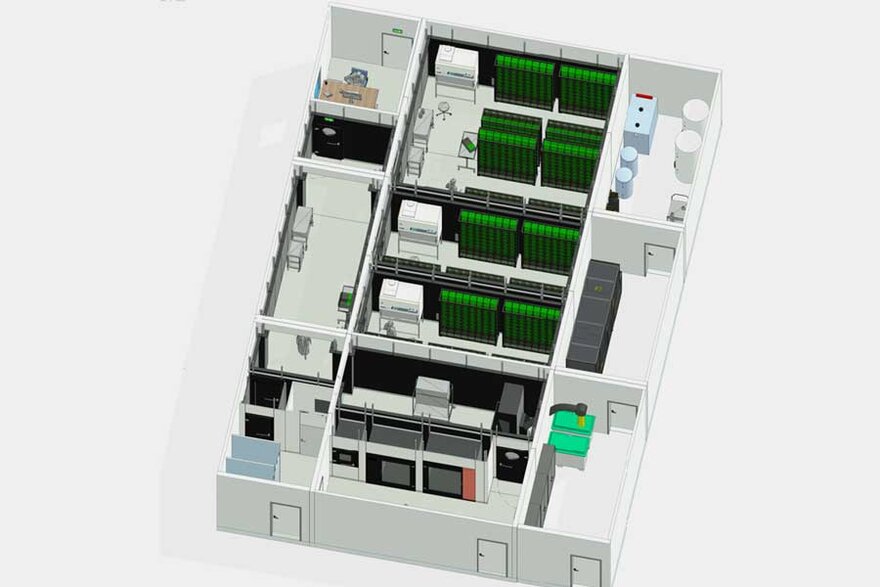Laboratory test animal facility
Similar to BSL-3/4 laboratories, these animal holdings involve the confinement of animals that may be contaminated with pathogens of risk group 3 or 4, so that special requirements must be met here:
- A suitable ventilation of the animal housing unit including the realisation of a negative pressure. According to GV-SOLAS, animal laboratories shall be ventilated independently of one another. The HVAC systems need to be designed to ensure that specified values for the room air condition can be maintained in a self-regulating manner.
- All surfaces must be appropriate to be decontaminated and resistant to disinfectants. Special solutions for large animals must be considered regarding doors, walls and floors.
- Transfer solutions and airlocks need to be available for people, animals, material and samples.
- Special tightness requirements apply, e.g. the Canadian Biosafety Guideline or the VDI 2083, Sheet 19.
SPF animal facility
In laboratory animal housing, specific-pathogen-free means the absence of specific pathogens.
SPF areas are operated on a hygiene level which ensures compliance with this requirement. Personnel enter the area via airlocks, e.g. air showers and are only allowed to stay in this low-germ environment wearing protective clothing, for instance, to care for the animals or to remove animals for experimental testing. This area is sealed off from the outside by further material locks, e.g. for previously autoclaved cages, feed bags, water bottles. The SPF area – in contrast to an infectious area – is kept in overpressure.




